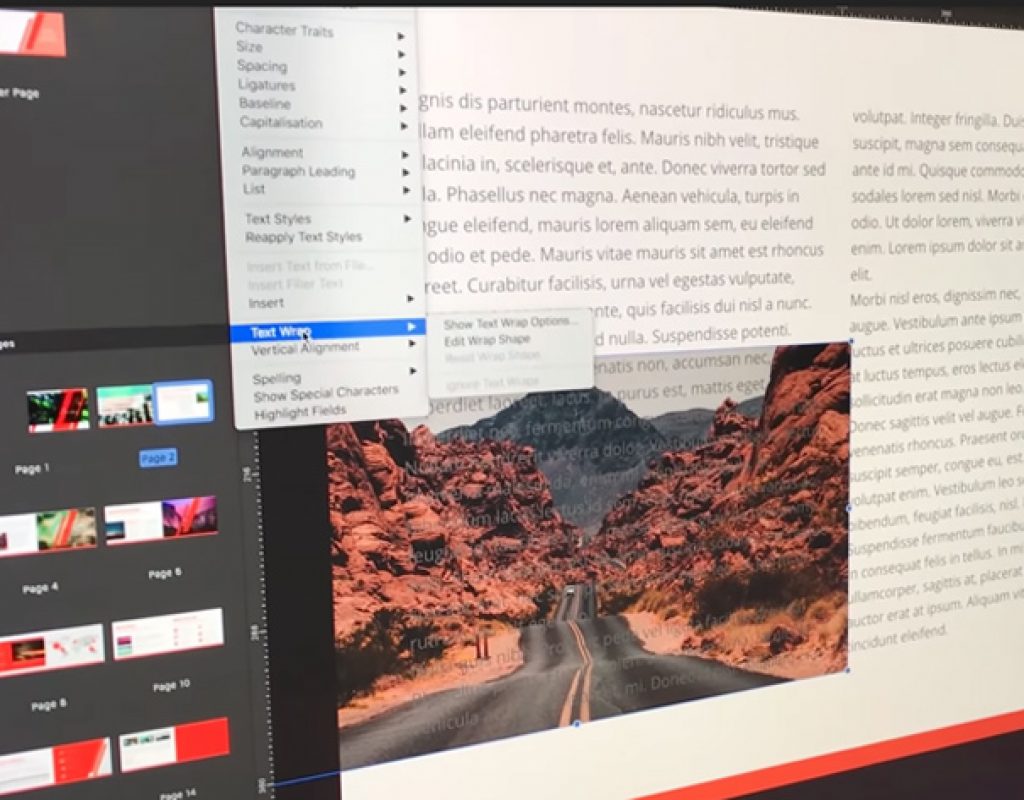

- #Affinity publisher footnotes manuals
- #Affinity publisher footnotes update
- #Affinity publisher footnotes manual
- #Affinity publisher footnotes full
- #Affinity publisher footnotes software
They would need to replace pages through the end of the manual because one footnote was inserted on a replaced page unless accommodation was made for numbers in between existing ones. If footnotes had been used in a manual such as this (which I have not actually seen done, but just hypothetically at this point), they would run into the same issue with numbering those.
#Affinity publisher footnotes update
This method would significantly reduce the cost and wastage as they would not need to reprint the entire manual for each small update which would be released. When new pages were added to the manual, rather than replace potentially hundreds of pages to maintain the page numbers, they instead wound up with fractional page numbers - so if inserting a new page between 55/56 and 57/58, they might number it 56.5/56.6 for example.
#Affinity publisher footnotes software
To accommodate these relatively small changes which would happen somewhat frequently, the binders were helpful in that the company which produced the software would send punched pages with only the changes and additions, along with instructions concerning where to insert or replace the pages when updating from the prior version.
#Affinity publisher footnotes manuals
These manuals often had hundreds of pages, and small changes were required between releases. Something to chew on: manuals for older computer platforms (particularly mainframes, as well as Multics and other multi-user environments) often came as punched sheets in large 3-ring binders. In a new edition, text is added, text is removed, and text is moved. The first edition is not a sacrosanct edition! That is, if I have an existing footnote - call it 2, and I have another place in the text where I would want a footnote with the same text for footnote or endnote 2, it would be nice to insert another reference to footnote 2 in the text rather than adding another distinct footnote - but not just as superscripted text, so that if it is not locked and I insert another footnote before the first instance of footnote 2, both instances would be renumbered to 3. Here is another obscure situation to consider: multiple instances of the same footnote. When it comes time for the 3rd edition, you could do a "lock all" to prevent the new 2nd edition footnotes from changing. Newly added footnotes would be created unlocked, so they could still adjust dynamically as the content was modified, but leaving the existing ones untouched. For example, if I had footnotes from 1 to 10 and locked them, then deleted a portion of the text containing footnote 5, then if I were to insert another footnote between footnote 4 and where footnote 5 used to be, I would get 4bis (or other selected numbering scheme - 4.1, 4a, whatever) instead of 5 being reused similarly if I inserted between where 5 used to be and where 6 is, I would get 5bis (5.1, 5a. If a section of a story was deleted which contained a locked footnote or endnote, it could be replaced with an invisible marker which represented the still-locked (now invisible) footnote or endnote to ensure it was not reused later. A "lock all" / "unlock all" feature would then change the "locked" property of all footnotes/endnotes that existed at that time (possibly within a selection or a story). One way I could see achieving this would be to add a "locked" property to each footnote/endnote that locked the reference to that footnote or endnote so that it would never change. This may be a relatively rare use case, but it is still a very interesting one to consider, and finally gives us something other than the pointless begging for the feature (which we have been told repeatedly is coming) to discuss. (that's because in 2nd edition a new footnote was added and it must not break old references), so I wish Publisher supports that in some way.
#Affinity publisher footnotes full
It has powerful features you may be familiar with from Version 1, like smart master pages, text wrapping, custom tables, OpenType support, TOC, advanced colour controls (including PANTONE© library), and full professional print output.Right now I'm working on a document which has following numbering of footnotes.

It’s the most ambitious app we’ve ever createdĮven though you’re working on an iPad, this is by no means a light version of Affinity Publisher.

In the Designer Persona, you can access all the key drawing and shape building tools from Affinity Designer, including the Pencil Tool and Vector Brush Tool for adding illustrations to your pages, the Knife Tool for quickly slicing shapes, curves or text into separate parts, and the Appearance Panel for applying multiple strokes and fills to objects in your layouts. With all three Affinity apps installed, you can switch seamlessly between the toolsets of Designer and Photo within Publisher.


 0 kommentar(er)
0 kommentar(er)
